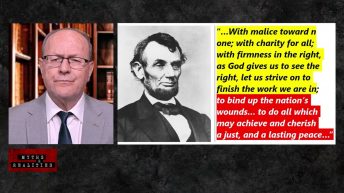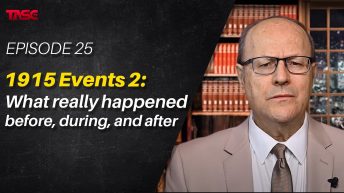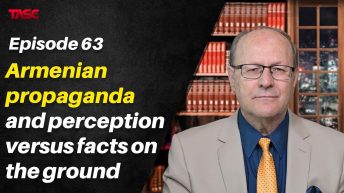When World War One was over and the Allies won, the time finally came to divvy up the loot, and it was not an easy task. Paris Peace Conference formally opened with the pledge of “open covenants, openly arrived at,” but the realities were far from anything open. There were wheeling and dealing everywhere. To understand this atmosphere fully, one needs to know that there had been many secret treaties by the Allies to partition the Ottoman Empire. One can then appreciate why it was necessary for nations such as Britain, France, and Russia to demonize the Turks regarding the alleged Armenian Genocide. One of the bleakest sessions of the delegates at Paris was held in Lloyd George’s apartment on March 20, 1919. During this acrimonious debate, President Wilson’s suggestion of sending a commission of inquiry to Turkey was born. The Allies wanted President Wilson to determine the borders of Armenia and preferably assume a mandate over it. Under such circumstances, two American investigation commissions were sent out to examine conditions in the Near East. The first one was King-Crane Commission, dispatched to Arab lands covered in Episode 47. King-Crane commission visited 36 cities, mainly in the Arab provinces of the Ottoman Empire, in the six weeks between June 10th and July 21st, 1919. Bias, arrogance, disrespect, deception, defamation, and racism ubiquitous in the US Protestant Missionary reports from Anatolia and, by extension, in the Western media coverage, have found their way, unfortunately, straight into the King-and-Crane report. Prejudice and perception trumped objectivity and facts. The US government withheld this report, perhaps because of the suggestion of independence for Arab states, which would clash with the imperialistic demands of Britain and France. Thus, the King-and-Crane report had little effect on the American public or the international arena. The second one was General Harbord Mission, sent to Eastern Anatolia and the Caucasus, which is covered here, in Episode 48. While the King-Crane commission has been tasked with preparing a general study of the Near East, General Harbord was charged with studying the situation of Armenians—not the peoples of Eastern Anatolia and the Caucasus, just Armenians. The members of we’re mainly American military men. One Armenian, Lt. A. Khatchadoorian, the translator upon whom the commission primarily relied, and one Turk, Professor Hussein (Pektash,) were official members. Another Armenian, Major Haig Shekerjian, joined the mission in Anatolia as a de facto member. Khachaturian drew many of the mission reports and filled them with negative comments on the “character” of the Turks, but few data. Khatchadoorian was also a member, often the leader, of fact-finding missions sent to regions not visited by the entire mission. Hussein, the sole Turk, was not representative of the Turkish public opinion and certainly not a Turkish nationalist. The founding member of the “Turkish Wilsonian League” publicly supported an American mandate for Anatolia. Archival records make no mention of his role in the mission’s deliberations. Most importantly, the only interpreters to occupy the mission were Armenians: Kojassar, Ohanessian, and Serijian. Only a few Turks in Istanbul who knew foreign languages spoke for themselves. All of the comments of Turks who were questioned in eastern Anatolia, the scene of the Turkish Armenian troubles, were filtered through Armenian translators. Before they left for their investigations, commission members were given a list of persons to consult in Paris and on-site in Istanbul, Anatolia, and trans-Caucasia, who allegedly provided reliable information. The list included Boghos Nubar, head of an Armenian national delegation at the Paris Peace Conference, Avetis Aharonian, president of the Armenian Republic, Hovhannes Kachaznuni, prime minister of Armenian Republic, Charles Crane, James Barton, Herbert Gibbons, and the Armenian patriarch and other Armenians in Istanbul. The opinions expressed by Armenian churchmen, generals, politicians, American missionaries, and Western diplomats are all necessarily anti-Turkish and anti-Islam, for political and religious reasons. There was not a single Ottoman Turk or any other Muslim was included in the list of persons to be consulted. Even the population statistics, all-important in studying the feasibility and morality of creating in Armenia in Anatolia, were drawn entirely from Armenian sources. Historical essays given the committee all ignored atrocities committed by Armenians victimizing Turks and dismissed the numerous Armenian rebellions against the Ottoman government. Most of the reading material was on Armenians and/or Armenians; even those few sections were devoted explicitly to Turks. #USA#ABD#Amerika#MythsRealitie#ErgünKırlıkovalı
Myths and Realities




Add comment